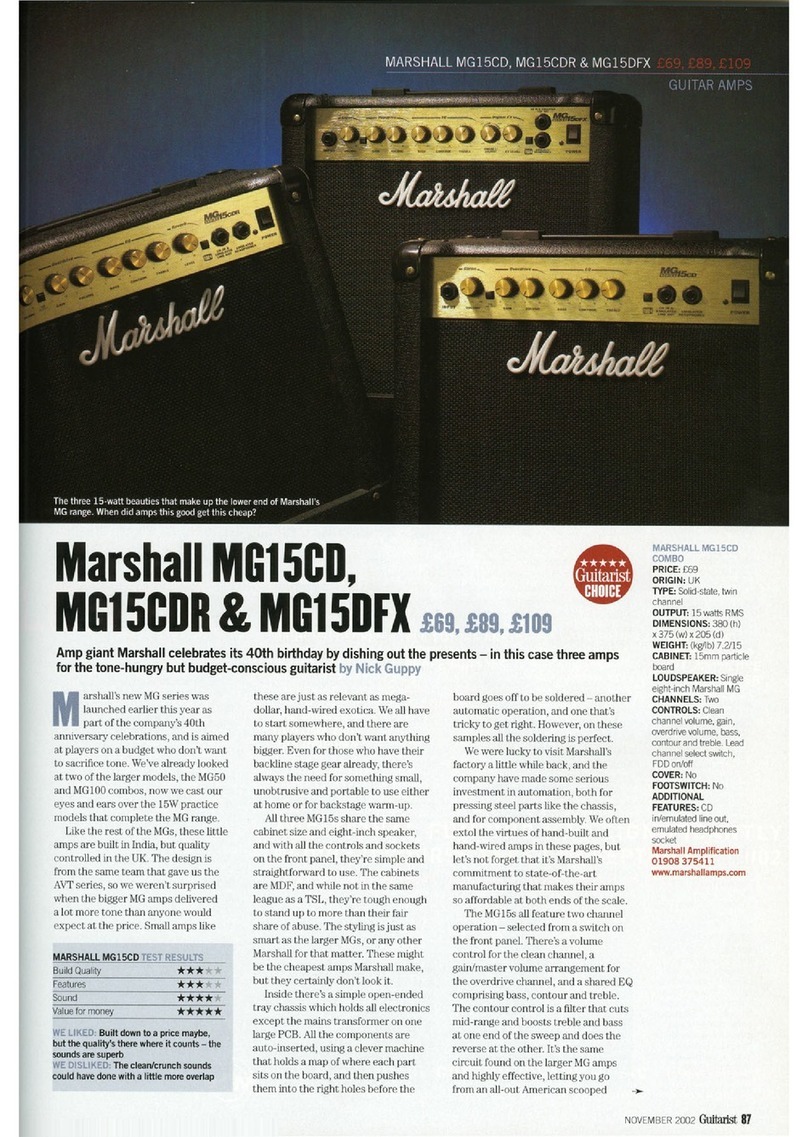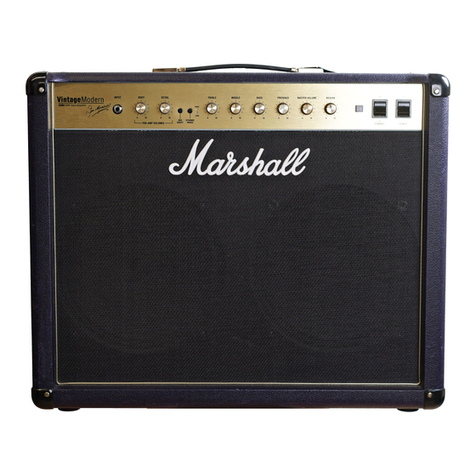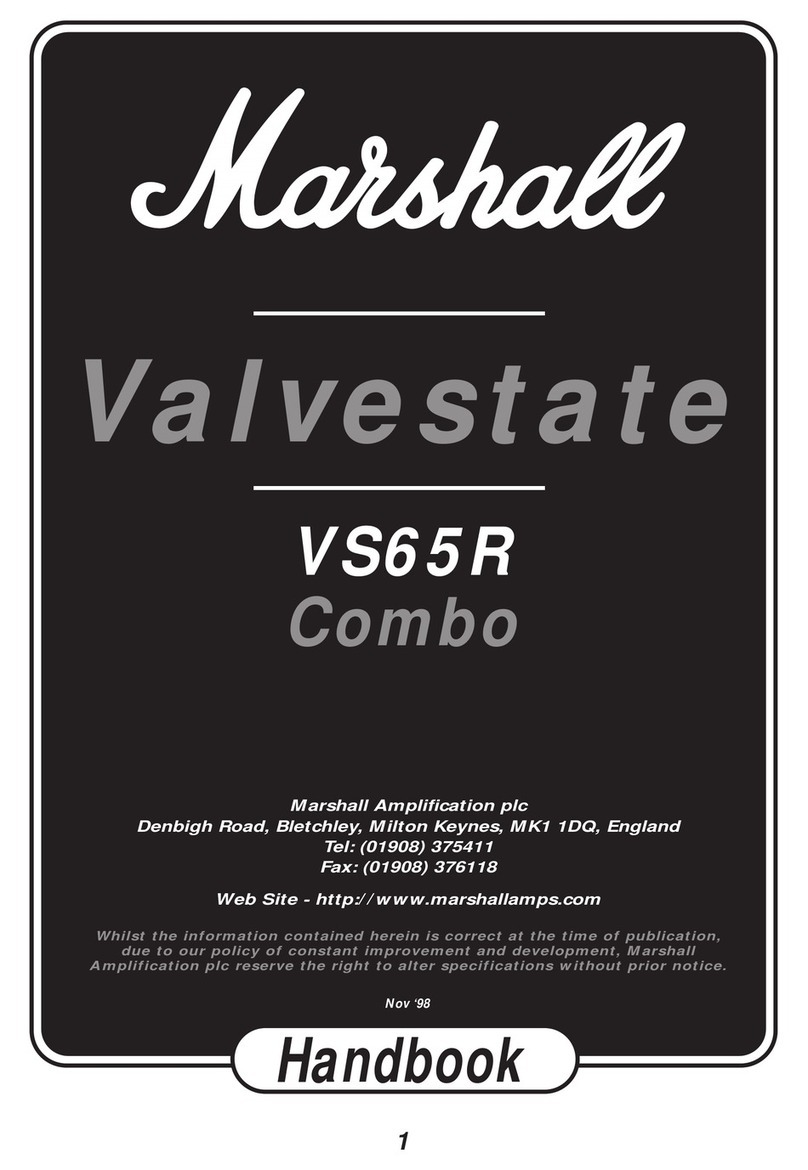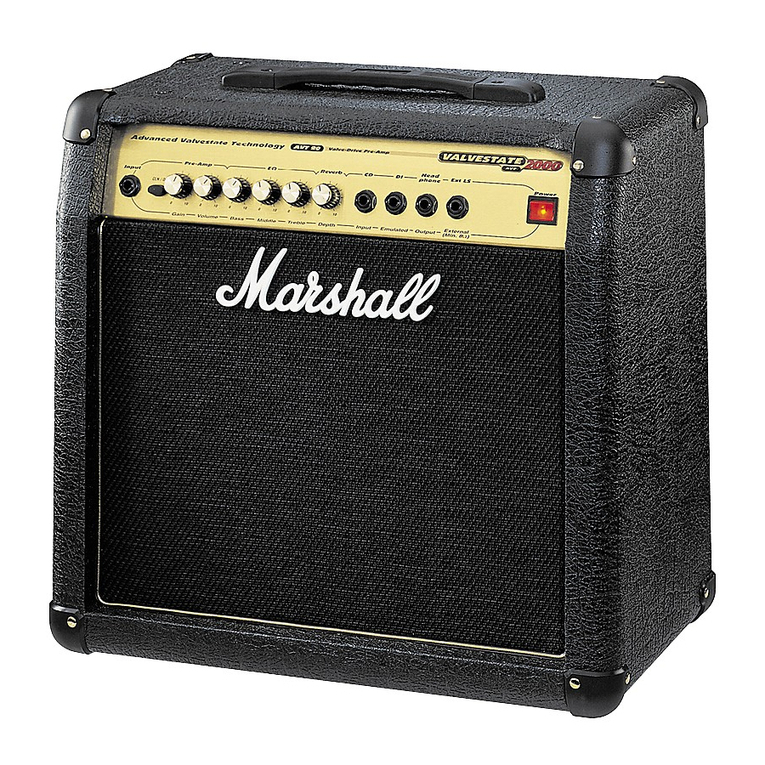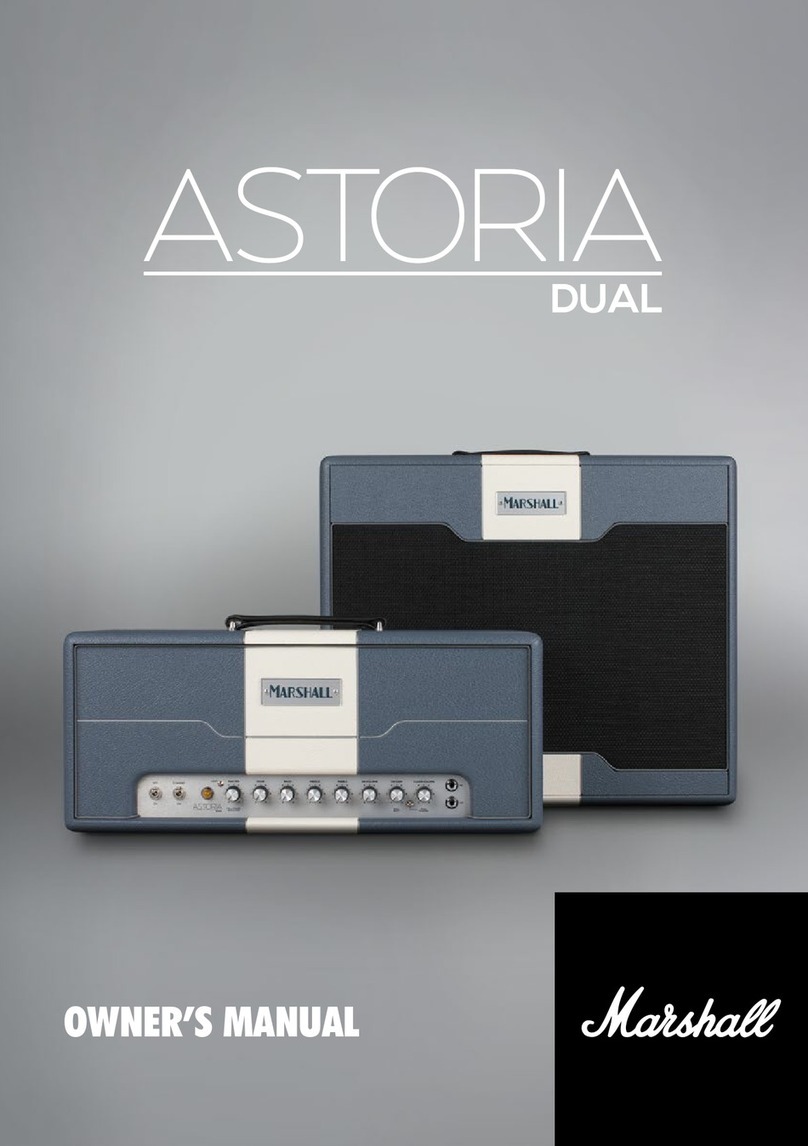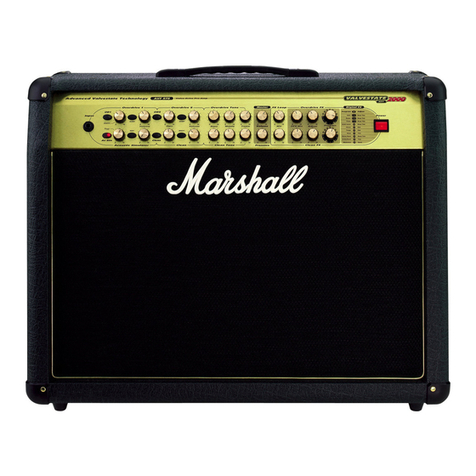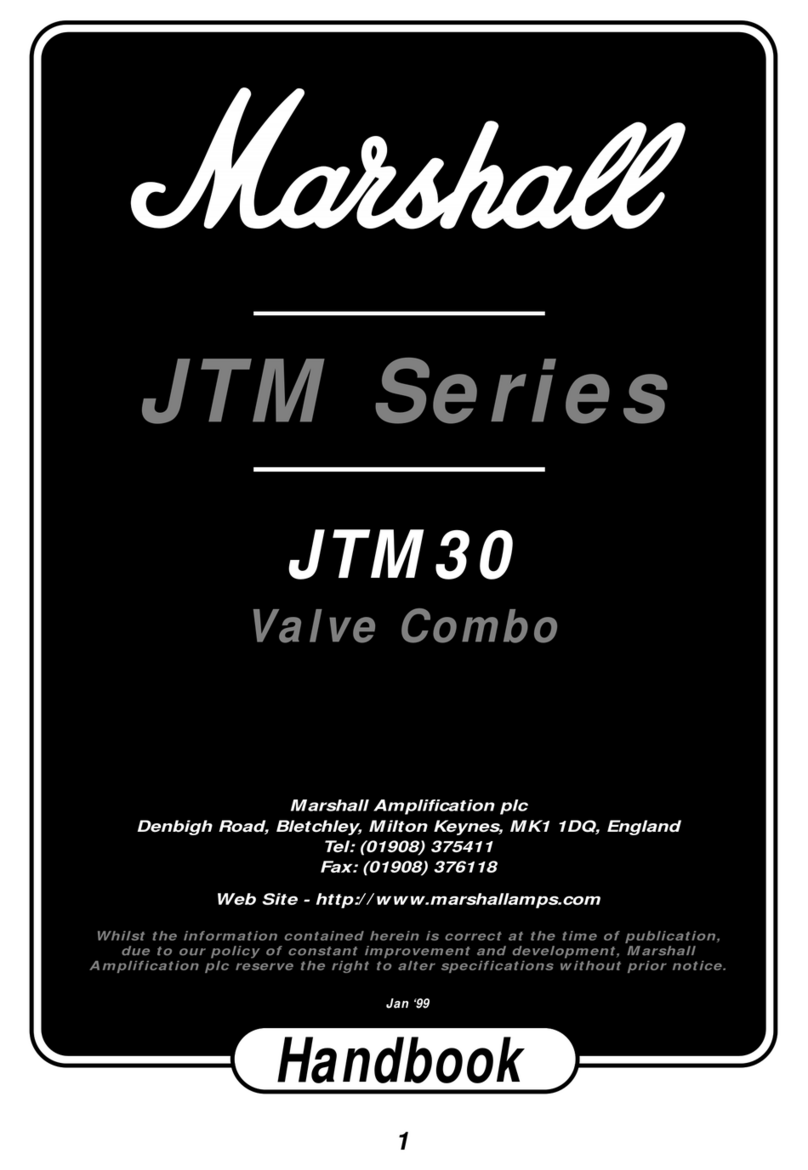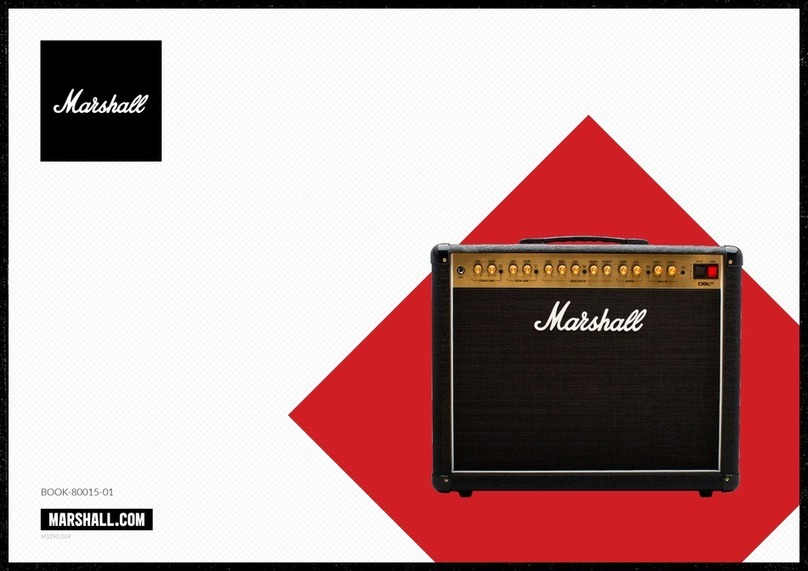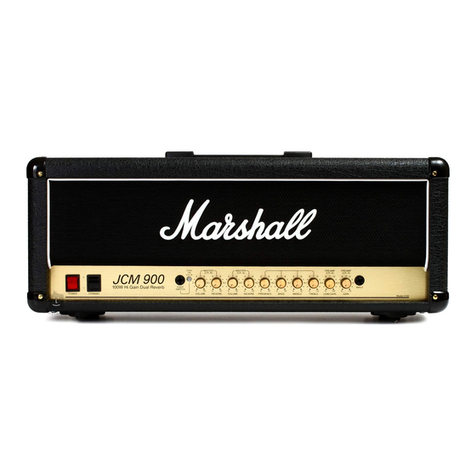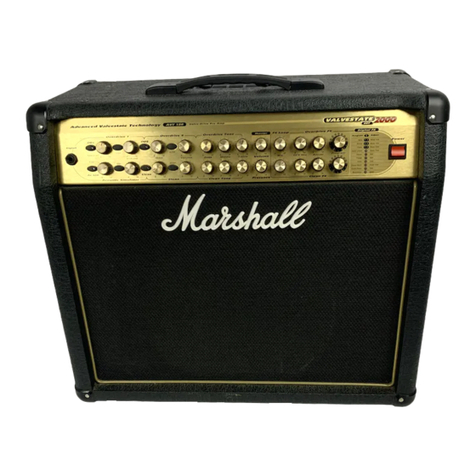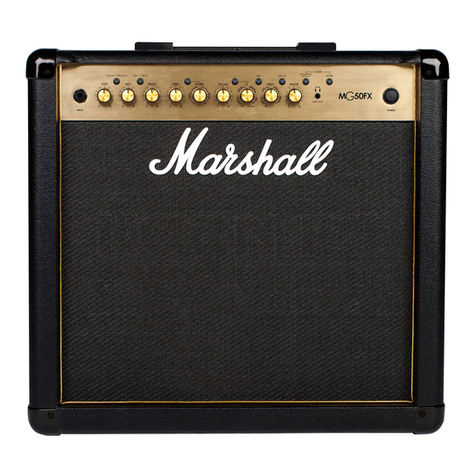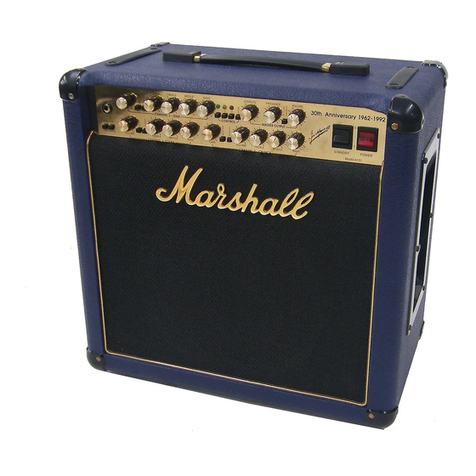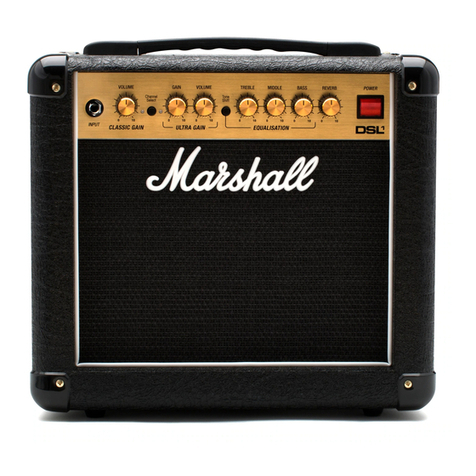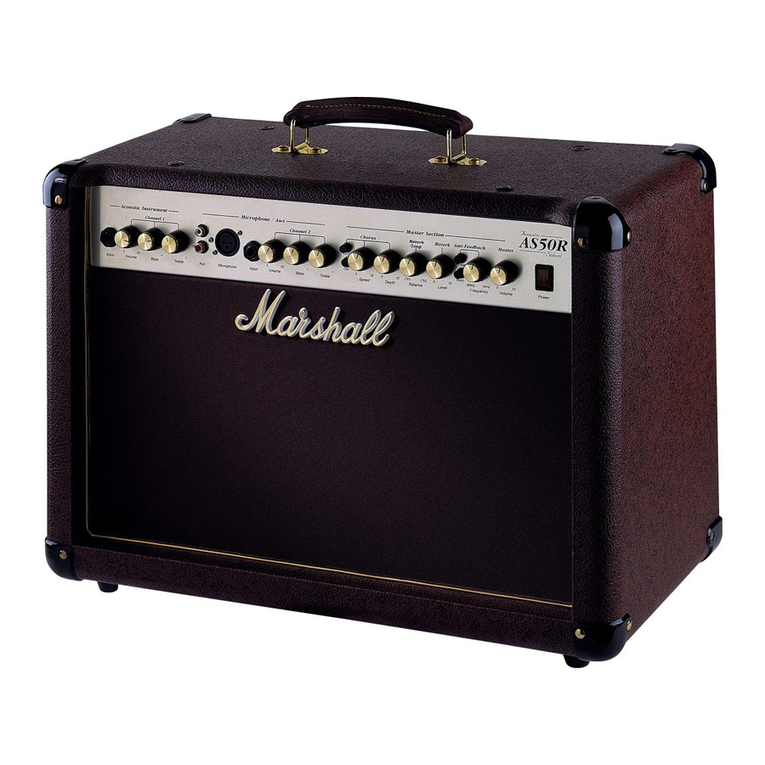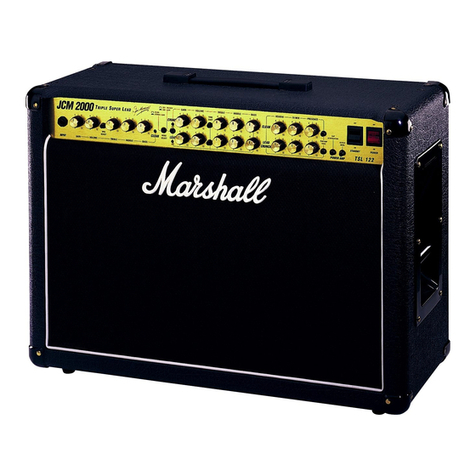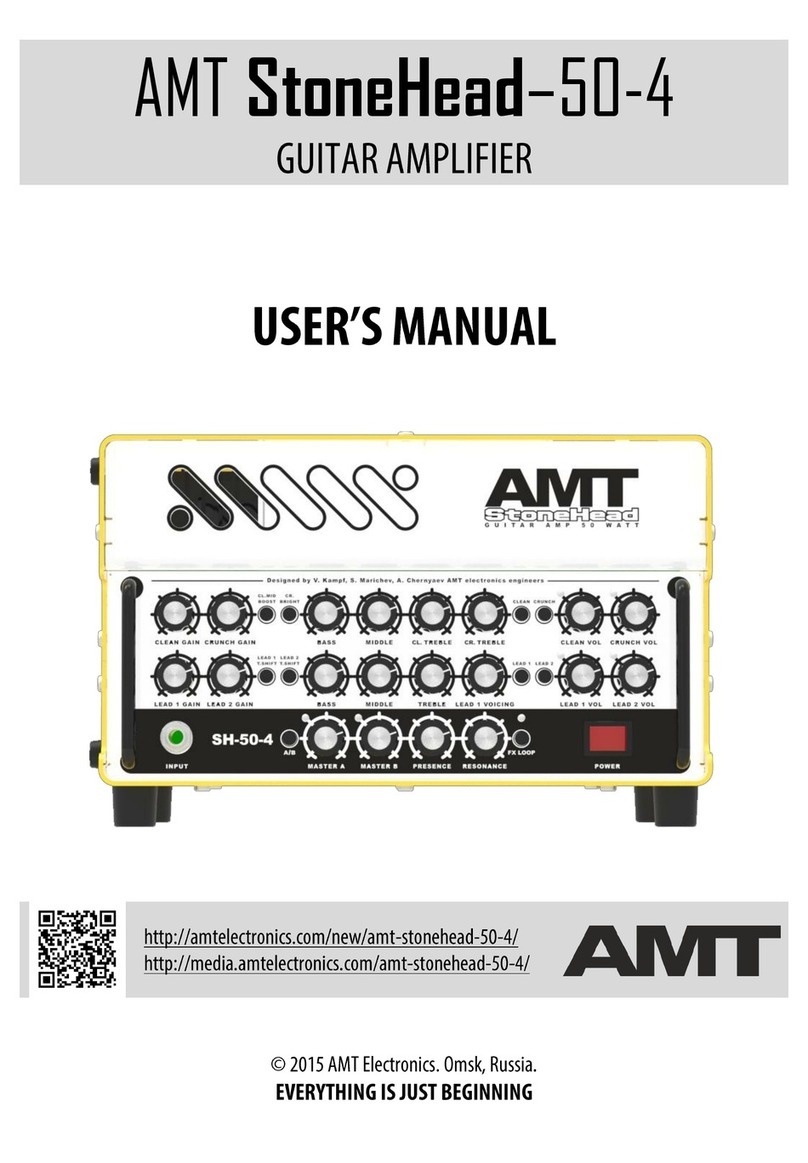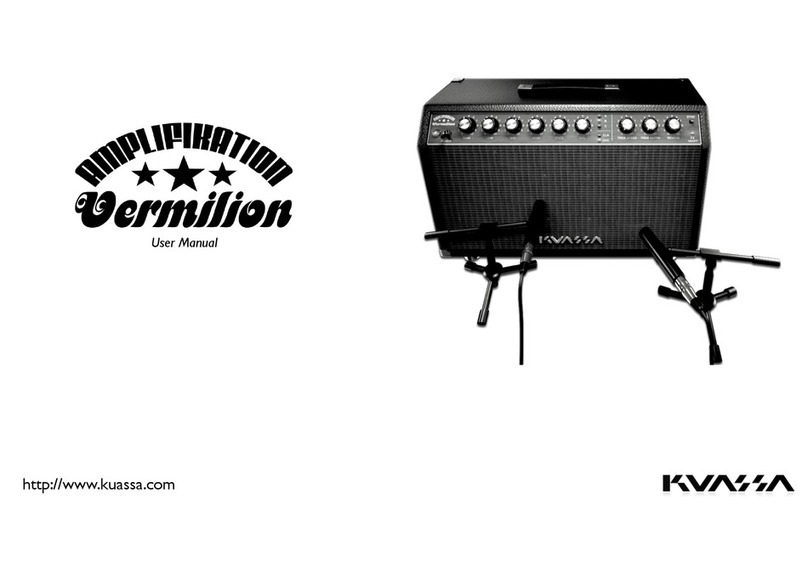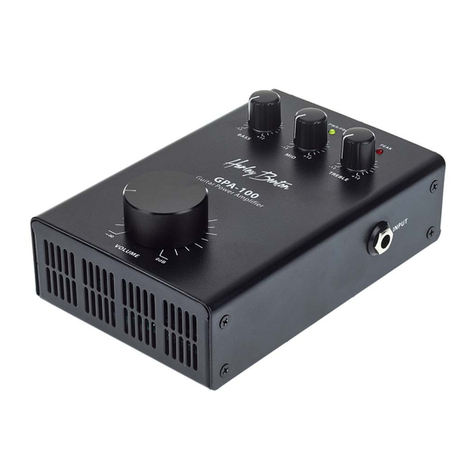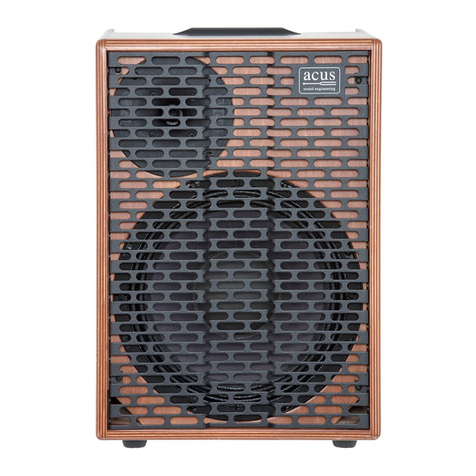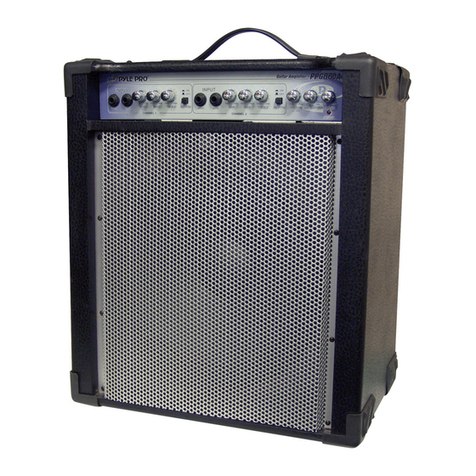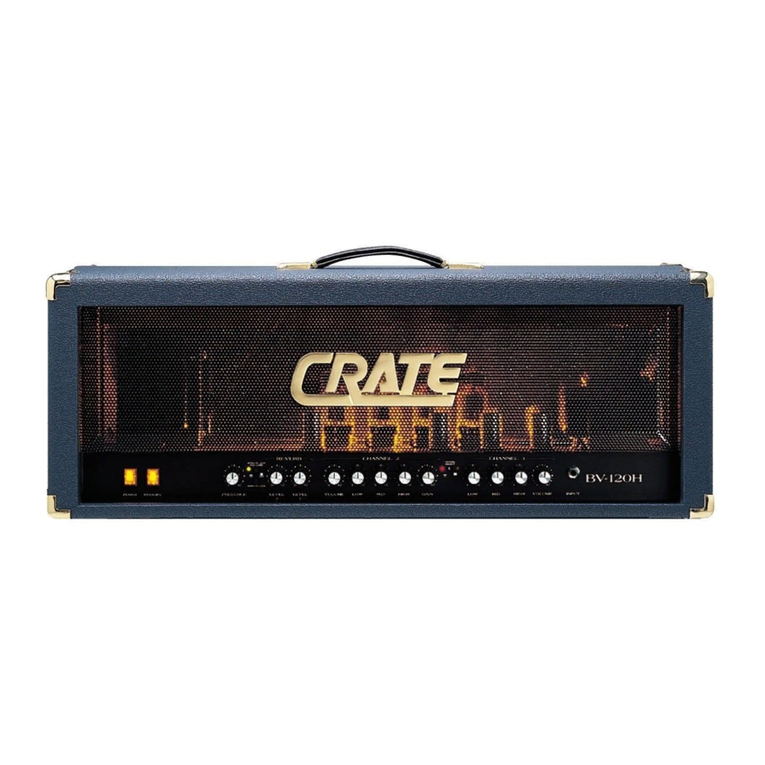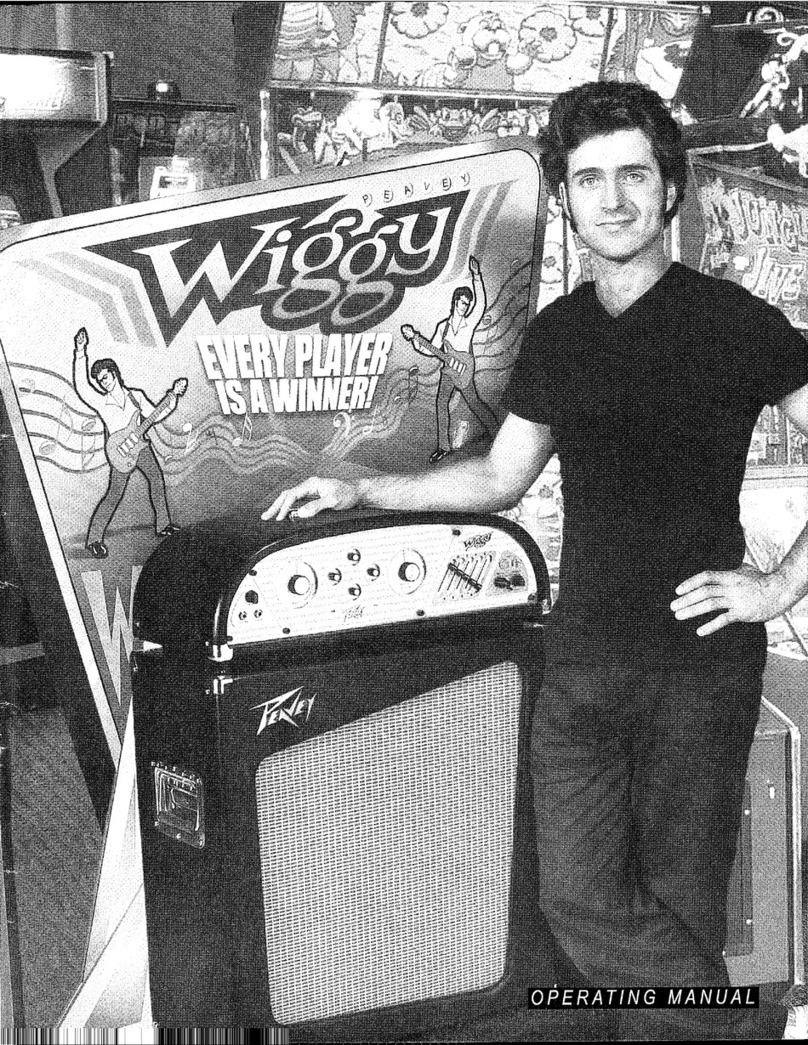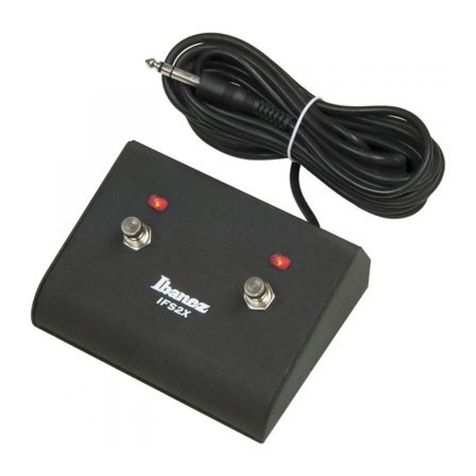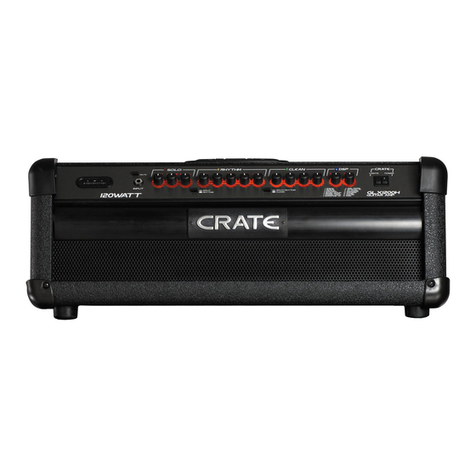2 1
ENGLISH
Overview
The mindset behind the DSL100H is a simple one and
obviously identical to that of the original JCM2000 DSL100
head – combine the world-renowned EL34 driven power-
stage of the 1959 Super Lead Plexi (SLP) 100W head with
a dual channel valve preamp, giving you two footswitchable
Super Leads in one. Then, for good measure, add a built-in,
studio-quality, digital spring Reverb plus extra preamp gain
that can take you into JCM800 2203 territory and far beyond
it. Hence the name DSL – Dual Super Lead. The DSL40C is
the same exact beast except in a 40-Watt, 1x12" combo form,
housing a custom-voiced Celestion speaker.
Both amps feature two footswitchable channels (footswitch
supplied) named Classic Gain and Ultra Gain – each with
two modes, selectable via a front-panel button. As their
names imply, each channel has a very different character.
Classic Gain takes you from a 1959 style clean to the snarl
of a JCM800 2203, and everything in-between, via its Clean/
Crunch mode button. Ultra Gain, on the other hand, takes you
from a hot-rodded 2203 vibe to an even higher gain response
with additional mid-boost, via its Lead 1/Lead 2, mode switch.
Both channels share a passive three-band EQ with controls
for Bass, Middle and Treble. The Equalisation section also
features a Tone Shift button which, when activated
(pushed in), shifts out the mid frequencies making the
amp ideal for brutal, modern metal tones, especially when
combined with high gain settings. Each channel also has
its own individual Reverb level control for the built-in studio
quality digital spring reverb, This effect can be switched on/off
via the supplied footswitch.
Both amps’ power section features controls for Resonance
and Presence. Resonance adds a variable bass boost to
your sound without muddying it up, while the Presence adds
high end. The ability to select either full output power or
half-power via the Pentode/Triode switch on the rear panel,
adds further to your DSL’s already impressive feature set. The
all-round tonal and gain versatility makes both the DSL100H
& DSL40C superb and flexible performance tools for today’s
most demanding playing situations and you can rest assured
it is packed full of our famed Marshall tone.
The ability to select either full output power or half-power via
the Pentode/Triode switch on the rear panel, adds further to
your DSL’s already impressive feature set.
Enjoy your DSL amp and please read this handbook carefully
before plugging in.
Follow all instructions and heed all warnings
KEEP THESE INSTRUCTIONS
Warning:
Before going any further, make sure that your amplifier is compatible with your electrical supply. If you have any doubt, please seek help
from a qualified technician – your Marshall dealer can help you in this respect.
Mains Input & Fuse:
Your amplifier is provided with either a detachable mains (power) lead which should be connected to the mains input socket on the rear
panel of the amplifier or a fixed mains (power) lead attached to the rear of the amplifier.
The specific mains input voltage rating that your amplifier has been manufactured for is indicated on the rear panel of the amplifier.
The correct value and type of mains fuse for valve amplifiers is specified on the rear panel of the amplifier.
NEVER attempt to bypass the fuse or fit one of the incorrect value or type.
Transporting your equipment:
Please ensure that your amplifier is switched off and unplugged from the mains electricity supply and that all removable cables have been
disconnected from your equipment before attempting to move it.
Important set up information:
1. Make sure that the cabinet(s)/speakers, where appropriate, are connected to the correct impedance LOUDSPEAKER jack(s) on the
rear panel of the amplifier. See the Speaker Output guides in this handbook, if applicable, for specific information regarding impedance
matching. When using an extension cabinet make sure that you are using a proper speaker cable. Never use a screened (shielded) guitar
cable for this purpose.
WARNING! Failure to do any of the above may damage your amplifier.
2. Ensure that the VOLUME controls on the front panel are set to zero.
3. For amplifiers provided with a detachable mains (power) lead, connect the supplied mains (power) lead into the MAINS INPUT on the rear
panel first and then into an electrical outlet.
4. Plug your guitar into the INPUT jack socket on the front panel.
5. Turn the front panel POWER switch on and, if a valve amplifier, wait a couple of minutes before going to point 6, other wise go to point 7.
6. After waiting engage the STANDBY switch (see Front Panel Features for full explanation).
7. Turn the volumes up to your preferred level and your amp is ready to play.
EUROPE ONLY – Note: This equipment has been tested and found to comply with the requirements of the EMC Directive
(Environments E1, E2, and E3 EN 55103-1/2) and the Low Voltage Directive in the E.U.
EUROPE ONLY – Note: The Peak Inrush current for the DSL100H is 44A and the DSL40C is 27A.
Note: This equipment has been tested and found to comply with the limits for a Class B digital device, pursuant to part 15 of the FCC
Rules. These limits are designed to provide reasonable protection against harmful interference in a residential installation. This equipment
generates, uses and can radiate radio frequency energy and, if not installed and used in accordance with the instructions, may cause
harmful interference to radio communications. However, there is no guarantee that interference will not occur in a particular installation.
If this equipment does cause harmful interference to radio or television reception, which can be determined by turning the equipment off and
on, the user is encouraged to try to correct the interference by one or more of the following measures:
— Reorient or relocate the receiving antenna.
— Increase the separation between the equipment and receiver.
— Connect the equipment into an outlet on a circuit different from that to which the receiver is connected.
— Consult the dealer or an experienced radio/TV technician for help.
From JIM MARSHALL
I would like to personally thank and congratulate you for selecting
one of our Dual Super Lead, all-valve DSL100H heads or DSL40C
combos.
Since I started Marshall Amplification in 1962 I have witnessed
some incredible breakthroughs and advances in amplifier design
technology. These include, switchable channels, Master Volume,
Reverb, MIDI technology, speaker emulation and digital effects
processing, to name just a few. These may seem like every day
features nowadays but this certainly wasn’t always the case.
However, the same values that were present in the first Marshalls
are still here today, that is, solid workmanship, reliability, iconic looks
and above all great Marshall tone.
As you may know, when the JCM2000 Dual Super Lead series of
amps was first introduced in 1997, we were delighted to see them
get a fantastic reaction from guitar players and also the press. In
fact one of the biggest American guitar magazines described the
DSL100 as “The best Marshall ever? It combines the best tonal
qualities and features of both modern and vintage Marshall amps
in one package.” Better still, when the world renowned magazine,
Guitar Player, reviewed the DSL100 it printed
“The Ultimate Marshall?” as a subheading on their June 1997
cover.
After a very successful life, the JCM2000 series was replaced by
the JVM series in 2007, which has also gone onto great success
and critical acclaim. That said, there is still a great deal of respect
and demand for the DSL’s with one of the UK’s most popular guitar
magazines recently referring to the DSL100 as “the go-to rock
amp.”
As a result of public demand, I have decided to introduce four
affordable amplifiers based on the popular DSL100, two of which
are featured in this manual: a 100-Watt head – the DSL100H, and
a 40-Watt combo – the DSL40C. In addition to their new names,
these EL34 powered beauties both boast the same exact front panel
features and functions. They also include a variable Resonance
control (as opposed to the fixed off or on Deep switch on the
original) and a fresh, modern look, while remaining true to the great
tones that made the original DSL100 such a popular amp.
I would like to wish you every success with all of your musical
endeavours and also your DSL amp, which I know will provide you
with great tones and playing pleasure for many years to come.
Welcome to the Marshall family!
Yours Sincerely,
Jim Marshall
